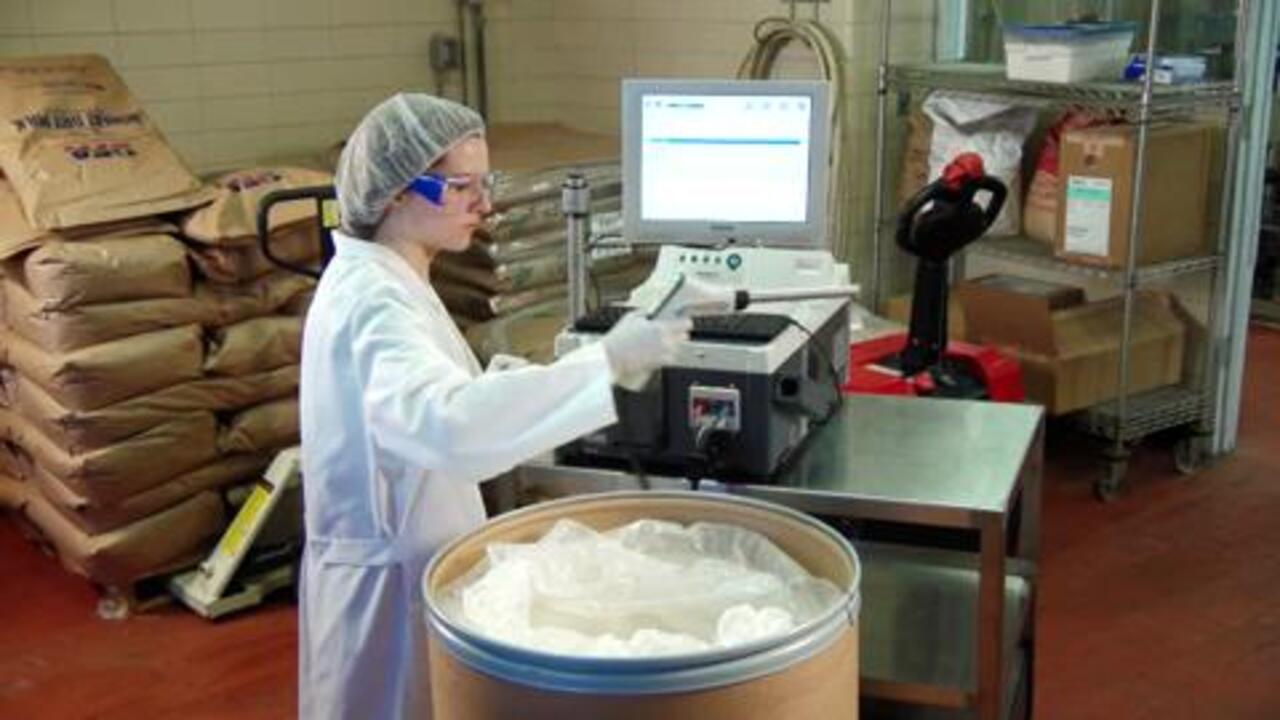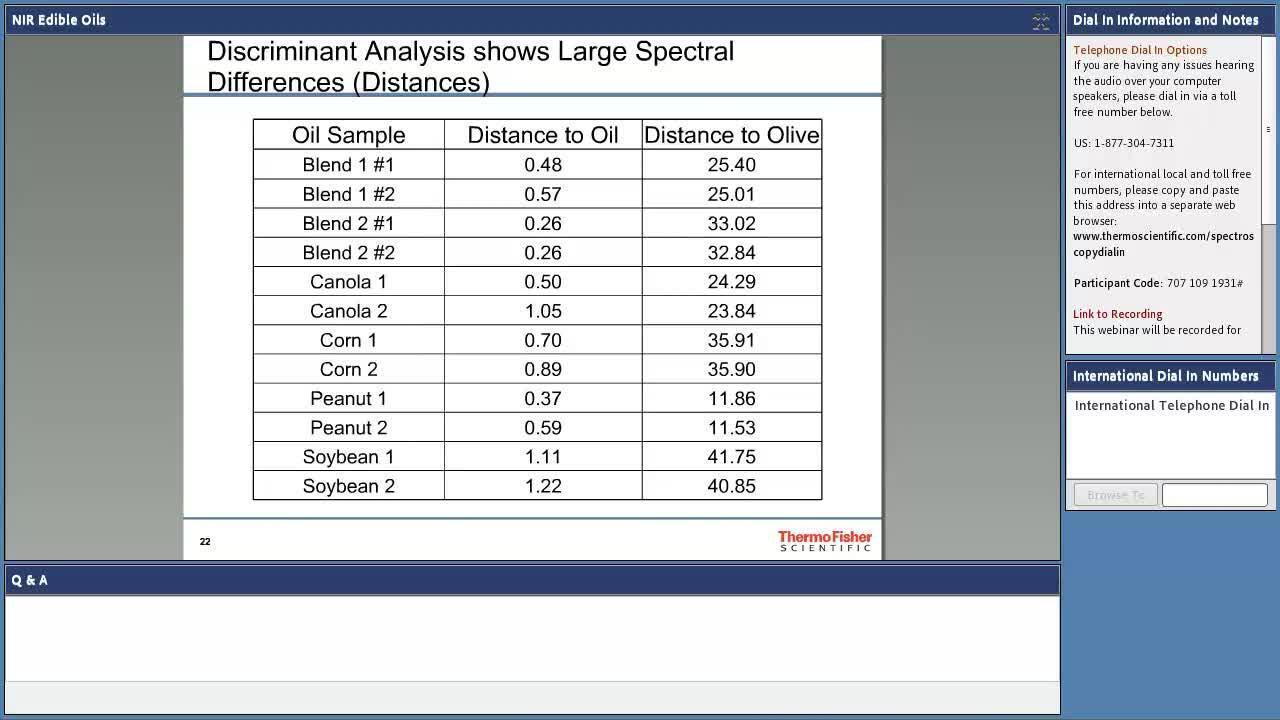Search Thermo Fisher Scientific

NIR spectroscopy resources
Here you will learn about different applications for FT-NIR and how you can apply this technology to your analyses and quality assurance and quality control activities. Browse the bottom of this page to see how you can put Thermo Scientific NIR spectrometers to work for your specific application.
Featured NIR spectroscopy resources
Near-infrared spectroscopy additional resources
Learn more about Near-infrared spectroscopy, and the different applications the technology offers for analysis. You’ll find numerous different application notes from food and beverage to pharmaceuticals, as well as white paper, eBooks, and webinars.
Pharmaceutical
Food, beverage, and agriculture
Chemical and polymer
NIR technology
Semiconductor manufacturing
NIR FAQs
What are the advantages of FT-NIR versus a dispersive NIR?
Fourier Transform NIR systems have advantages in higher resolution, better wavelength accuracy, higher signal energy and are more stable and repeatable. FT systems do not require software standardization for method transfer between instruments. Also, FT systems are not affected by stray light which causes sampling challenges for dispersive systems.
What is PLS?
Partial Least Squares (PLS) is a statistical approach to quantitative analysis. PLS models correlate spectral variation with component concentration variation to create models for components predictions.
What is reflection analysis by NIR?
Samples in cups, bags, vials or set directly on the integrating sphere are interrogated by NIR light energy and the light is transmitted, directly reflected, absorbed, and diffusely reflected. The diffusely reflected light is collected and sent to a detector. By collecting the amount of light that is diffusely reflected from a solid sample you can predict component concentrations or identify samples.
What is transmission analysis by NIR?
Samples in tubes, cuvettes or vials are held in a module and interrogated by NIR light energy. The source light can be transmitted, directly reflected, scattered, absorbed, and diffusely reflected from the samples. The light that transmits through the sample is collected by a detector. By collecting the amount of light that is transmitted thru a sample you can predict component concentrations or identify samples.
How many samples are required to develop and validate a calibration?
It depends on how challenging the application is, how many components will be in the calibration, and if the most ideal standards are used for calibration development.
Transmission analysis on liquids often require fewer standards than reflection analysis especially on in-homogeneous solids. More components require more standards in the calibration model than a single component model. Standards used in NIR calibration models must consider all the chemical, physical and sampling variation that the calibration will be exposed to when implemented for QC testing. For some applications an ideal standard set can be synthetically generated in the lab but when pulling samples off production process running within specification, it generally takes a significantly more standards to model in all the needed variation. At a minimum, 10 times the number of components in the calibration model will generate a starter calibration to prove feasibility of the calibration.
Can current calibrations from a different manufacturer be transferred to the Antaris NIR?
Yes, using the Thermo Scientific Standards converter utility program, spectra from other NIR manufacturers can be converted to a format directly compatible with the Thermo Scientific Antaris NIR Analyzer. The utility program converts spectra from wavelength to wavenumber as well as convert to a standard Absorbance format. Then it automatically transfers the converted spectra and all associated wet chemistry data into Thermo Scientific TQ Analyst calibration development software. The method developer then sets the spectral processing and regions in TQ Analyst and calibrates the method into Antaris format.
How does someone use an Antaris spectrometer for in-line process analysis?
If the process environment has water hose down, CIP, dust, high temperature, corrosive or explosives chemicals, the analyzer needs to be placed in a safe area or enclosed in an environmentally stabilized enclosure. Fiber optics run from the NIR analyzer to probes or flow cells installed in production process pipes, tanks, hoppers, conveyors, reactors, etc. The fiber optics carry the NIR source light to the probe sampling window and then carry the light after it has interacted with the sample back to the NIR analyzer detector. The end of the probe will have a window or an air gap for reflection or transmission analysis. The product being analyzed must be self-cleaning or the probe engineered to automatically clean itself by high pressure air. The computer that controls the NIR analyzer is also located in the safe area with Thermo Scientific RESULT Software exporting NIR results to text or Microsoft Excel files, LIMS, OPC or by 4-20mA.
How are probes used for in-line NIR analysis?
Fiber optic probes can be used for analyzing liquid samples in transmission or solid samples in reflection. For samples that have bubbles or solids or change state between liquid and solid, a transflectance probe works the best. A fitting attached to the probe mates it with a port on a tank, pipe, reactor, hopper or above a conveyor. The common fittings used with probes are Swagelok, sanitary tri-clamp or bolt-on.

